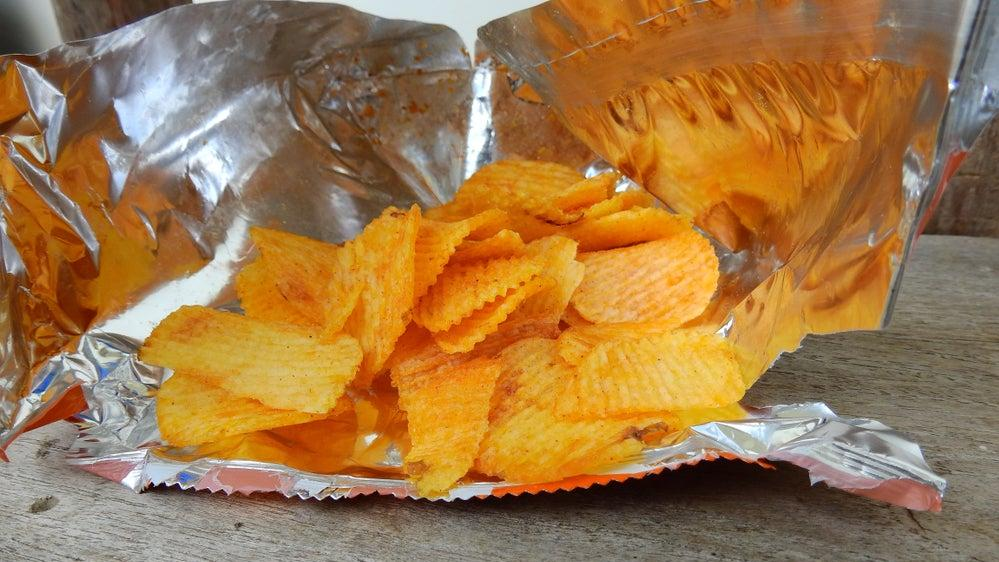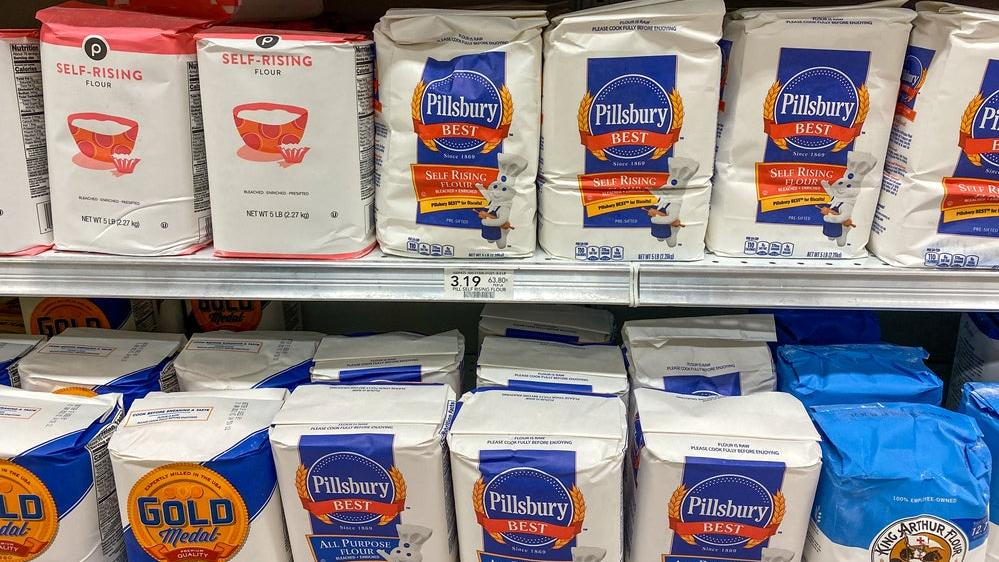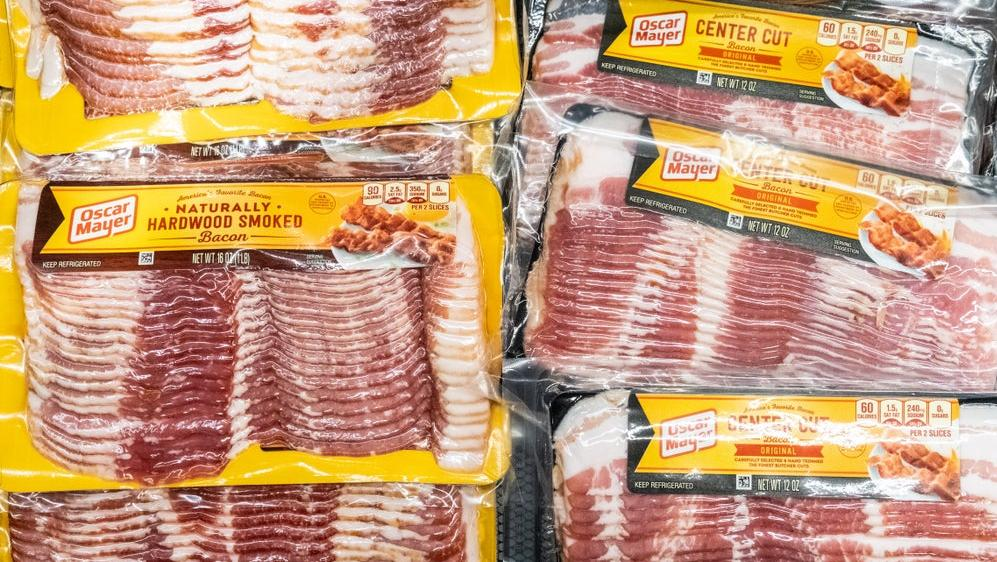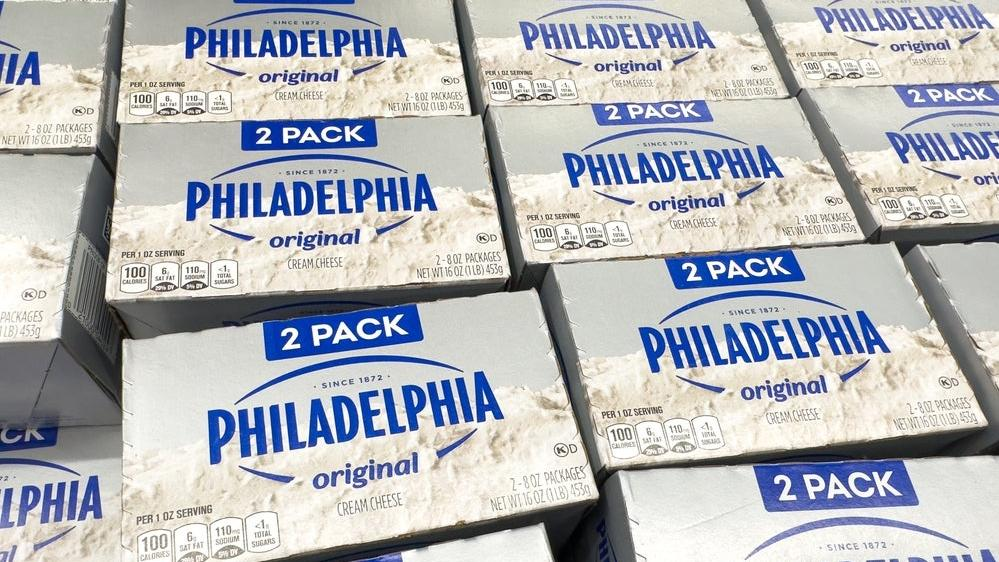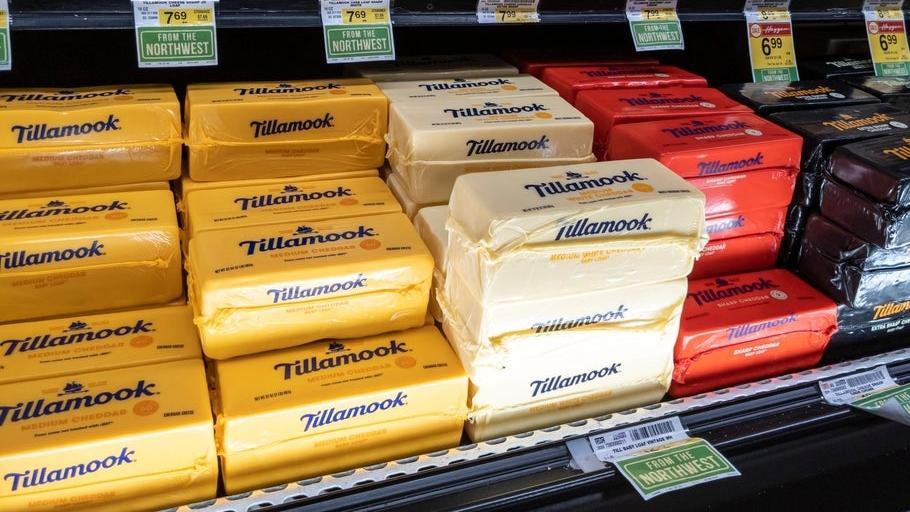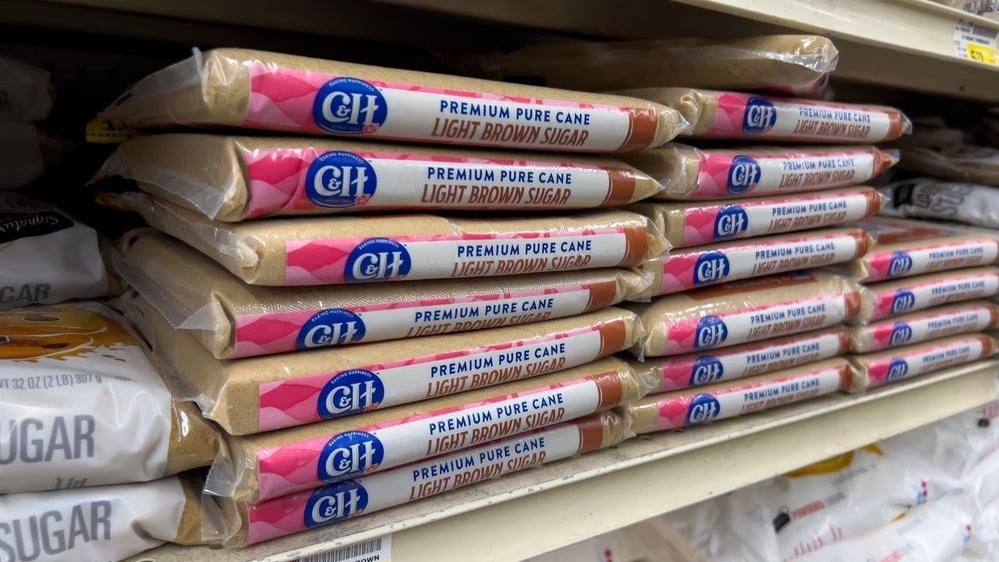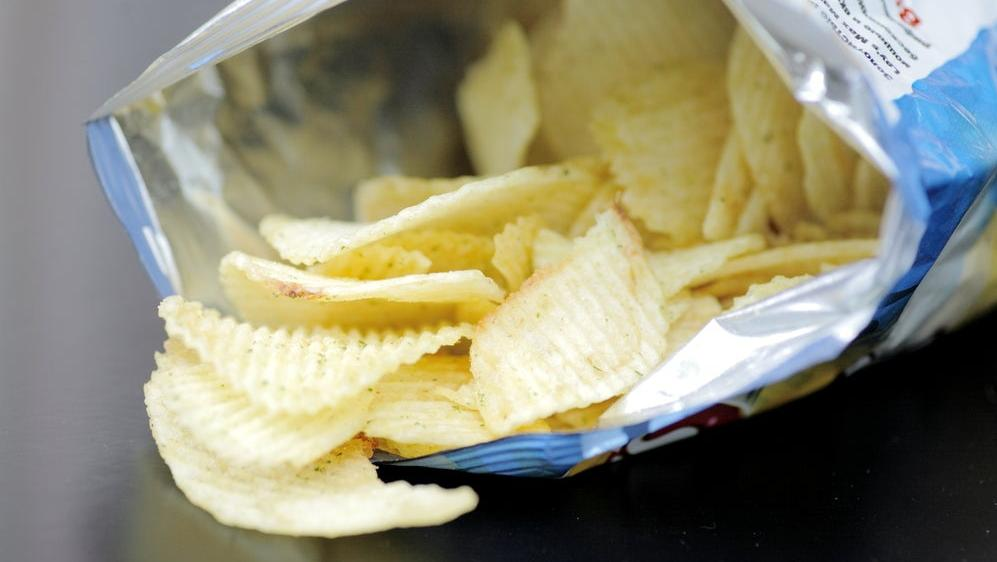The 6 Foods With The Worst Packaging
How to open, reseal, and store the most annoying packages—and why each is designed like that in the first place.
We may receive a commission on purchases made from links.
Doesn't it seem like some food packaging was designed to make our lives more difficult? It's like the makers of bacon and flour don't want us to enjoy breakfast and cookies, respectively. There's usually a reason that the most irritating packages are like that, whether it's related to ease of shipping or just good old nostalgia (just like the recipes printed on the back). But just because these products are tough to open, reseal, or store doesn't mean you have to suffer. Here are six tips for managing some of the most notoriously inefficient packaging in the grocery store. Finally, you can stop cursing the makers of cream cheese and potato chips.
Flour
No pantry is complete without a 2-lb. (or 5-lb., or 10-lb.) bag of flour, which is typically sold in paper bags with folded, creased openings at the top. While these bundles are efficient to ship and pack, paper bags of flour are notoriously messy, since the powdery substance slips out at the seams. It's almost impossible to even simply open the bag without getting the white stuff everywhere, let alone measure out a cup or two without spilling.
Why is flour packaged like that?
Flour has been packaged in paper for a hundred years, according to Gold Medal, and believe it or not that was actually an upgrade from fabric sacks. Flour still comes in those paper bags for a couple of important reasons, the first of which is the most obvious: It's just been that way for a long time. Nostalgia drives a lot of marketing in the baking industry (think: baking cookies with Grandma), and since we're all used to flour coming from a paper bag, it's what we expect to see at the store. Also, paper packaging is cheap. Flour is a basic staple, and people don't want to pay a lot for fancy packaging unless it's for a premium product.
The solution
There's no secret hack when it comes to dealing with the flour bag, except to put it in another container once you bring it home. Even if you cringe at social media influencers organizing their kitchens with hundreds of clear plastic containers, you can and should make an exception for this one product. King Arthur Baking Company (which used to go by King Arthur Flour) says that any 6-quart container will comfortably hold one 5-lb. bag of flour. An airtight container with a wide opening will let you reach in and scoop out flour easily, and it will keep your flour dry and pest-proof. If you pick a square-ish model it'll fit like a Tetris block on your pantry shelf.
Bacon
Unless you buy your bacon from a butcher counter, it's always sold in plastic packaging that fans out the strips so you can examine all its fatty, meaty glory. Once you open the package, however, there's no going back, because there's no way to reseal it. Even worse, it's a pain to open in the first place. Do you open it from the top? The side? Should you use scissors or a knife? From start to finish, bacon packaging is a 0/10.
Why is bacon packaged like that?
Much like flour, we accept bacon packaging because we don't know any other way. Oscar Mayer patented the first sliced, packaged bacon in 1924 (yes, Oscar was a real person), and we've just sort of been doing it the same way ever since. There's also the reality that the packages aren't designed for resealing on purpose. Most families eat the whole package in one go, and it's only small households that are suffering with dried-out bacon shoved back in the meat drawer. In an article for Today in 2023, Jim Monroe, vice president of corporate affairs for pork juggernaut Smithfield, said that the company has tried selling smaller packages of bacon, but people just didn't buy them. Don't hold your breath for zippered packages, because Big Bacon isn't on board.
The solution
Of course there's always the large Ziploc bag option when it comes to bacon storage, but those are expensive and contribute to single-use plastic waste unless you wash and reuse them. Thankfully there's an easier way, as seen on TikTok: Simply cut the whole package in half with a sharp knife or with scissors, plastic and all. Remove the halved bacon slices on one side for cooking and eating, and slide the empty plastic over the other side of the package to store. It's not a completely air-tight solution, but it will keep your bacon from drying out or turning brown from oxidation for a couple of days.
Cream cheese
You know the drill with cream cheese bricks. Once you open the box and peel back the foil, any of the remaining spreadable cheese is destined to turn yellow and crusty in the fridge. You can carefully fold the foil back all you want, but the air will still creep in. The paperboard boxes are all but useless once they're opened, and the foil rips when you try to portion out cream cheese from inside them with a butterknife or other utensil.
Why is cream cheese packaged like that?
Cream cheese comes packed one of two ways: either in plastic tubs or as bricks wrapped in foil. The foil packaging has been happening since the late 1800s, and it was developed to give the soft cheese a packable shape within a material that also resists light and odor. In theory, brick cream cheese is meant for baking, which is why it's marked with measurement lines, and cheese in the tub is for spreading. However, cream cheese in the tub is always more expensive because it's processed (often with a more whipped texture) and the containers are more expensive to produce and ship.
The solution
The biggest enemy to cream cheese is air, so if you've managed to destroy the foil packaging of your cream cheese, fear not—you just need a better container. Yes, the answer lies in using another container. However, the ideal vessel for your cream cheese is nothing fancy, just a leftover half-pint-size deli container. Cream cheese blocks are 8 ounces, and a deli container that holds a half pint (8 fl.oz.) of your favorite chicken salad or coleslaw will comfortably fit a whole brick with a little squishing. Pop the top on to keep it airtight and you're good to go. If you've already eaten a few tablespoons, your brick should even fit in a quarter-pint container (4 fl. oz.).
Block cheese
With so many varieties of shredded cheese these days, it's easy to overlook cheese by the block, but that would be a mistake. Shredded cheese is convenient, yes, but it's also more expensive than block cheese, and most of these products contain anti-caking ingredients that inadvertently prevent them from melting as well as block cheese you freshly grated yourself. The problem is, most cheese sold by the block is packaged in thin, vacuum-sealed disposable plastic. Once it's opened, the cheese is vulnerable to drying out.
Why is block cheese packaged like that?
Vacuum-sealed plastic packaging for cheese doesn't have a long history like flour, but it's been around almost as long as plastic wrap itself. It's widely used because plastic-wrapped cheese is preserved inside the package and won't absorb any odors, and the rectangular shape makes it easy for packing, shipping, and selling.
The solution
If you liked the hack for storing bacon, you're gonna love how it works for block cheese. All you have to do is slice your desired portion of cheese with the plastic still on. Take the sliced portion of cheese out of the plastic, then slide that empty piece of plastic back over the remaining block of cheese. Done and done.
Brown sugar
If ever there were a product that could benefit from a zippered bag, it's brown sugar. Instead, it's packaged in two different ways: either in thin plastic bags or in paper bags inside of paperboard boxes. Both, frankly, suck, because neither of them are able to create an airtight seal. That's a problem, because when brown sugar is allowed to come into contact with air, the moisture that makes it soft and mushy evaporates and the sugar crystals all stick together. When it comes time to bake, if your sugar has been sitting around for a few weeks you'll have a big hunk of hard sugar to hack apart.
Why is brown sugar packaged like that?
Much like flour, we have to assume that simple, inexpensive packaging is the only reason things are done this way. Other, fancier sugars that are similar to brown sugar, like Whole Foods' coconut sugar, are packed in zippered bags with a sturdy base (so that the bag stands up in the pantry), so it's not as though nobody has thought of alternative packaging. It probably just isn't financially viable for regular brown sugar.
The solution
Friend, get a brown sugar container. No, not just any old plastic container, but one specifically designed for brown sugar that has a piece of removable terra-cotta in the lid. Not only are these designed to be the perfect size for one box or bag of brown sugar, but the terra cotta is soaked in water, which keeps the sugar moist for up to 6 months. If you don't want to spring for a special container, you can still keep your brown sugar moist in any container with this terra-cotta brown sugar bear. For just a few dollars more, though, you can have a vessel that is airtight so you won't have to re-wet your terra-cotta as often.
Cereal and chips
Both cereal and chips suffer from the same problem: they start getting stale as soon as you open the bag. And most of the time the top is simply rolled down or folded over for storage, a woefully inadequate approach for keeping air away.
Why are chips and cereal packaged this way?
Both chips and cereal are extremely light products, and they're best when they're served super fresh and crispy. Because of that, they're packed in bags that are flushed with nitrogen, which prevents oxidation and staling. It's easy to fill bags with nitrogen, because they are a bit like a balloon. Could they be packaged in sturdier containers with sealable tops? Absolutely, which is why Pringles are a thing. Chips and cereal aren't the kind of foods that tend to hang around for very long, however, so it stands to reason that they don't need substantial packaging in order to survive in a kitchen cabinet for months.
The solution
Chip clips are the gold standard for keeping bagged chips and cereal fresh, of course, but not everyone has them, and most days they're just one more gadget that will clutter up your drawers (or break, or get lost, etc.). A close second is a binder clip, which is an astonishingly useful kitchen tool in general. If you don't have either of those tools on hand, however, it's easy to do a little creative folding to seal the top of the bag. The trick involves folding down the empty portion of the bag, rolling it back up, tucking in the sides, and flipping the open portion in the "flap" you've created—done right, it will create a spill-proof closure. This Redditor shows you exactly how it's done.
